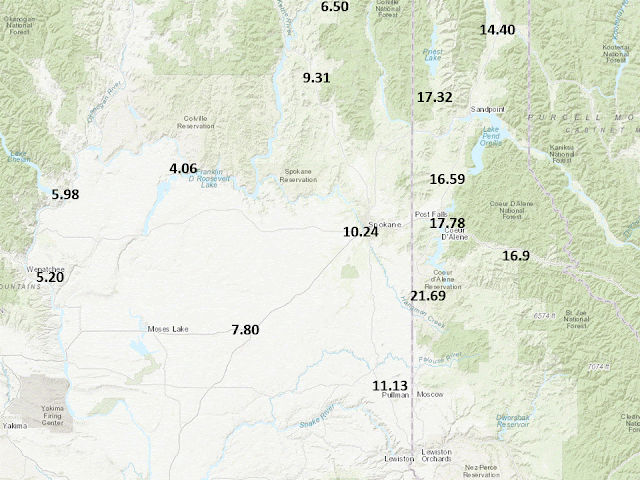When looking for the possibility of a roof collapsing, we want to take into consideration the different weights that snow may hold due to water content. Light, dry snow weight ranges from 1 to 3 lb/ft² while wet, heavy snow can reach up to 21 lb/ft². Once the snow has fallen, the snow can accumulate more liquid through humidity, and any additional rain that has fallen. Snow tends to act like a sponge and even though it may look like the snow depth is decreasing, the snow is actually absorbing the excess water. In other words, the depth of the snow can be misleading compared to the weight of the snow.
For most valley areas (excluding the Cascades and up near the Canadian border) there was little to no snow on the ground to start the month off. When looking at the maps below, we can see the weight of the snow (in lbs/square foot) as worst case scenario being placed on the roofs in terms of February contributions. This means that if there was no day time melting that occurred during the month, there could potentially be up to the stated weight on the roofs assuming no snow was on your roof to begin the month which was the case for most of these areas. But chances are that there was daytime melting that was occurring especially given the higher February sun angle bringing the total weight down.
 |
| Snow load weight in lb/ft² - February 20th, 2019 |
As you can see under 20 pounds per square foot for all reports listed except for near Plummer, ID. These values are much less than the December 2008 values that brought roof collapses to part of the region including Spokane.
Here are some suggested signs of snow load problems
- Cracks in the walls that were not previously there or have extended
- Frequent popping, creaking, or cracking sounds
- The roof visibly sagging
- Doors, windows that are noticeable harder to open or close, especially interior doors
For more information about structural snow loads, feel free to visit FEMA Snow Load Safety Guide
No comments:
Post a Comment